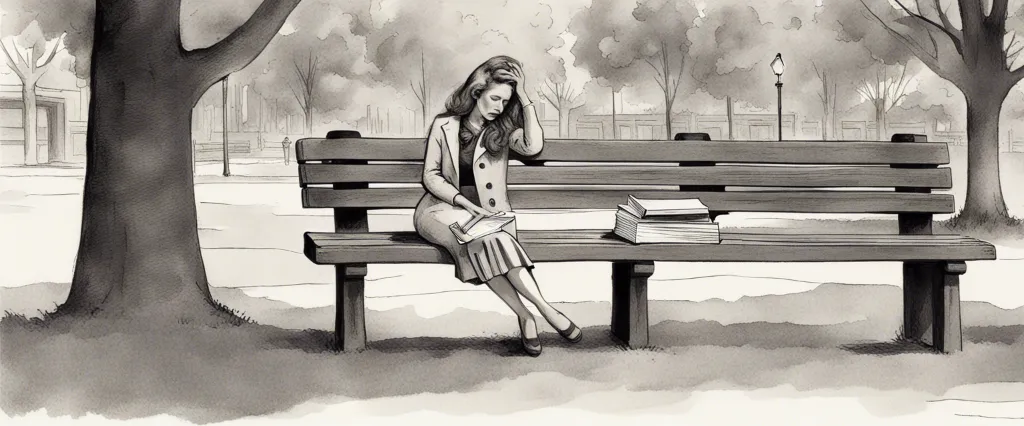In “It’s Called a Breakup Because It’s Broken,” Greg Behrendt, renowned author and relationship expert, dives into the difficult yet transformative journey of heartache and healing after a breakup. Drawing from his extensive experience in helping countless individuals navigate the complexities of relationships, Behrendt offers valuable insights, practical advice, and unwavering support to those seeking solace and guidance during this challenging time. With his compassionate and humorous writing style, Behrendt empowers readers to recognize the signs of a broken relationship and embrace the opportunity to not only mend their hearts but also discover their own worth and happiness.
Chapter 1: Accepting the End – Coming to Terms with the Reality of a Breakup
In Chapter 1 titled “Accepting the End – Coming to Terms with the Reality of a Breakup,” author Greg Behrendt explores the difficult process of accepting the end of a relationship and facing the reality of a breakup. The chapter aims to provide guidance and support to those who are struggling with the pain and confusion that often follows the end of a romantic partnership.
Behrendt starts by emphasizing the importance of acknowledging that the relationship has indeed ended. He stresses that denial only prolongs the healing process and prevents individuals from moving forward. He encourages readers to face the truth and accept that the breakup is a reality they must confront head-on.
The author also discusses the common tendencies people have to romanticize the past and cling to the hope of reconciliation. He emphasizes the significance of recognizing that this nostalgic view of the relationship is often distorted. Behrendt urges readers to let go of false hope and redirect their energy towards healing and personal growth.
Furthermore, Behrendt provides insight into the emotional rollercoaster that follows a breakup. He acknowledges the range of difficult emotions such as anger, sadness, and even relief that individuals may experience. Through personal anecdotes and humor, the author reassures readers that these emotions are normal and part of the healing process.
In summary, Chapter 1 of “It’s Called a Breakup Because It’s Broken” highlights the importance of accepting the end of a relationship and letting go of false hope. It encourages readers to confront the painful reality of the breakup, embrace their emotions, and begin the journey towards healing and moving forward.
Chapter 2: Healing and Self-Care – Nurturing Yourself Emotionally and Physically
Chapter 2 of “It’s Called a Breakup Because It’s Broken” by Greg Behrendt focuses on the importance of healing and self-care after a breakup. Behrendt emphasizes the idea that it is crucial to nurture oneself emotionally and physically during this difficult period.
Emotional healing is the first aspect addressed in this chapter. Behrendt encourages readers to embrace their feelings and go through the grieving process naturally. He emphasizes the importance of not suppressing emotions, as doing so could hinder the healing process. Instead, he advises readers to allow themselves to feel sadness, anger, and disappointment, as it is crucial to confront these emotions rather than pushing them aside.
Moreover, Behrendt emphasizes the significance of seeking support from friends, family, or professionals during this challenging time. He reminds readers that they don’t have to face the healing journey alone and encourages them to reach out for help when needed. Additionally, the author advises readers to avoid the temptation of seeking closure or looking for answers from their ex-partners, as it often leads to further pain and prolongs the healing process.
The chapter then shifts focus to physical self-care. Behrendt emphasizes the significance of taking care of one’s body by engaging in activities such as exercising, eating nourishing foods, and getting enough sleep. He stresses that physical well-being plays a vital role in overall emotional health and facilitates the healing process.
In summary, Chapter 2 of “It’s Called a Breakup Because It’s Broken” highlights the importance of healing and self-care after a breakup. Behrendt encourages readers to embrace their emotions and seek support from others, while also prioritizing physical well-being. By nurturing themselves emotionally and physically, readers can effectively heal and move forward after a breakup.
Chapter 3: Letting Go of False Hope – Recognizing and Moving on from Unhealthy Attachments
Chapter 3 of “It’s Called a Breakup Because It’s Broken” by Greg Behrendt is titled “Letting Go of False Hope – Recognizing and Moving on from Unhealthy Attachments.” In this chapter, Behrendt emphasizes the importance of letting go of false hope and unrealistic expectations after a breakup.
The chapter begins by highlighting the common tendency to hold on to hope, which often stems from denial and fear of being alone. Behrendt emphasizes the importance of accepting the reality of the situation and acknowledging that if the relationship has ended, it is highly unlikely to be revived. He stresses that hanging on to false hope will only prolong the healing process and prevent individuals from moving forward.
Next, Behrendt discusses the concept of unhealthy attachments and how they can hinder personal growth. He explains that seeking closure or hoping for a change of heart from an ex-partner is a futile endeavor and only causes further pain and disappointment. Instead, he advises readers to focus on accepting the breakup and reevaluating their own needs and desires.
The chapter also addresses the importance of self-respect and setting boundaries. Behrendt encourages readers to let go of any toxic relationships or friendships that hinder their progress and well-being. He emphasizes the need to surround oneself with people who bring positivity and support.
In summary, chapter 3 of “It’s Called a Breakup Because It’s Broken” highlights the significance of letting go of false hope and recognizing unhealthy attachments. Behrendt advises readers to accept the reality of the breakup, detach from unrealistic expectations, and prioritize self-care and personal growth. By doing so, individuals can heal and move forward in a healthier and more fulfilling way.
Chapter 4: Understanding the Breakup – Gaining Clarity on the Reasons and Dynamics of the Relationship’s End

Chapter 4 of “It’s Called a Breakup Because It’s Broken” by Greg Behrendt focuses on gaining a clear understanding of the reasons and dynamics that led to the end of a relationship. The chapter aims to help individuals gain clarity and closure after a breakup.
Behrendt emphasizes the importance of accepting the reality that the relationship has ended. He advises readers not to dwell on the past or cling to false hope for reconciliation. Instead, it is essential to focus on gaining insight into why the breakup happened.
The author outlines various common reasons for breakups, such as lack of compatibility, infidelity, loss of attraction, or different life goals. He emphasizes that it is crucial to acknowledge these reasons and understand that they are not personal failures. By recognizing the issues within the relationship, individuals can start the healing process and move forward.
Behrendt also discusses the dynamics of breakups, particularly the rollercoaster of emotions and the importance of self-care during this time. He emphasizes that suppressing or avoiding emotions will only prolong the healing process, and encourages readers to allow themselves to grieve and process their feelings.
Additionally, the chapter touches on the common phenomenon of the “spark” fading in long-term relationships. Behrendt argues that the “spark” is not a reliable indicator of a healthy relationship, and that true love involves deeper connections and mutual respect. By understanding this, individuals can let go of the idea that a rekindling of the initial passion will save the relationship.
Overall, Chapter 4 emphasizes the need for acceptance, understanding, and self-reflection in order to move on from a breakup. By gaining clarity on the reasons and dynamics of the relationship’s end, individuals can begin the healing process and work towards a healthier future.
Chapter 5: Rebuilding Your Identity – Rediscovering and Reinventing Yourself After the Breakup
Chapter 5 of “It’s Called a Breakup Because It’s Broken” by Greg Behrendt focuses on the process of rebuilding one’s identity after a breakup by rediscovering and reinventing oneself.
The chapter begins by explaining that it is crucial to let go of the old identity and embrace the opportunity for personal growth and self-discovery. It emphasizes that overcoming the pain of a breakup requires the understanding that rejection does not define one’s worth or value.
Behrendt brings attention to the importance of taking time to mourn the end of the relationship, acknowledging the pain and allowing oneself to heal. He encourages readers to seek support from friends, family, and therapy during this process.
The author then moves on to discuss the significance of self-awareness and self-reflection. He advises readers to examine their past relationship patterns and identify any unhealthy behaviors or negative patterns that may have contributed to the breakup. By understanding these patterns, individuals can work towards personal growth and make positive changes in their lives.
Behrendt also emphasizes the importance of setting boundaries and focusing on personal goals and aspirations. He suggests engaging in activities that bring joy and fulfillment, whether it be pursuing hobbies or exploring new interests. By investing time in oneself, individuals can learn to prioritize their own happiness and regain a sense of purpose.
In conclusion, Chapter 5 of “It’s Called a Breakup Because It’s Broken” guides readers through the process of rebuilding their identity after a breakup. By encouraging self-reflection, seeking support, setting boundaries, and investing in personal growth, individuals can rediscover and reinvent themselves, ultimately leading to a stronger and more fulfilling life post-breakup.
Chapter 6: Dealing with Grief and Loss – Coping with the Emotional Rollercoaster of a Breakup
Chapter 6: Dealing with Grief and Loss – Coping with the Emotional Rollercoaster of a Breakup offers valuable insights into overcoming the pain and emotional turmoil that accompany the end of a romantic relationship. Greg Behrendt’s book, It’s Called a Breakup Because It’s Broken, provides practical guidance for readers going through a breakup, helping them navigate the rollercoaster of emotions they may experience.
The chapter begins by acknowledging that breakup grief can be overwhelming and unpredictable. Behrendt emphasizes the importance of understanding that these emotions are a natural part of the healing process. He encourages readers to give themselves permission to feel and express their pain rather than suppressing it.
The author outlines various stages of grief and loss commonly experienced after a breakup, including denial, anger, bargaining, depression, and acceptance. Behrendt emphasizes that progressing through these stages is not linear, and individuals may find themselves moving back and forth between them. It is crucial to recognize that healing takes time and patience.
The chapter also touches on the concept of emotional triggers, where certain places, objects, or memories can intensify feelings of sadness or longing. Behrendt advises readers to identify and avoid such triggers while they are healing, allowing themselves to gradually regain emotional stability.
Moreover, the author suggests several practical strategies for coping with grief and loss. These include seeking support from friends and family, engaging in self-care activities, and finding healthy outlets for emotions, such as writing or engaging in physical exercise.
In summary, Chapter 6 of It’s Called a Breakup Because It’s Broken provides valuable insights and practical advice for coping with the emotional rollercoaster of a breakup. By acknowledging and accepting the stages of grief, finding healthy coping mechanisms, and seeking support, individuals can navigate their way towards healing and eventually reach acceptance.
Chapter 7: Setting Boundaries – Establishing Healthy Limits and Protecting Your Well-being
In Chapter 7 of “It’s Called a Breakup Because It’s Broken” by Greg Behrendt, the focus is on setting boundaries to establish healthy limits and protect one’s well-being after a breakup.
Behrendt emphasizes the importance of recognizing one’s worth and not settling for less than they deserve in any aspect of life. He explains that boundaries are necessary to maintain self-respect, protect emotional well-being, and avoid being taken advantage of by others.
The chapter starts by addressing the misconceptions about boundaries and clarifies that they are not intended to manipulate or control others, but rather to establish a sense of personal autonomy and protect oneself from harmful situations. Behrendt provides examples of different boundary situations after a breakup, such as not accepting late-night calls from an ex or refusing to engage in manipulative games.
Behrendt emphasizes that setting boundaries is not only about saying “no” to harmful behaviors but also about saying “yes” to self-care and self-love. He encourages readers to prioritize their own well-being and not be afraid to put themselves first.
The chapter also explores the fear that some may have in setting boundaries, often worrying about losing the other person or being seen as mean. Behrendt reassures readers that healthy boundaries are necessary for a successful relationship, and if someone cannot respect those boundaries, they are not meant to be in their life.
In summary, Chapter 7 of “It’s Called a Breakup Because It’s Broken” emphasizes the importance of setting boundaries as a way of establishing healthy limits, protecting one’s well-being, and fostering self-respect. Behrendt encourages readers to prioritize their own needs and not settle for less than they deserve.

Chapter 8: Moving Forward – Embracing the Future and Opening Yourself to New Possibilities
Chapter 8: Moving Forward – Embracing the Future and Opening Yourself to New Possibilities of the book “It’s Called a Breakup Because It’s Broken” by Greg Behrendt is all about finding the strength to move on from a breakup and start embracing the future with open arms.
Behrendt begins by emphasizing the importance of accepting the reality of the breakup. He explains that dwelling on what could have been or holding on to false hope will only hinder personal growth and prolong the healing process. Instead, he encourages readers to acknowledge their feelings, grieve if necessary, and focus on moving forward.
The author also emphasizes the need to let go of any lingering attachment to the past relationship. This involves purging reminders of the ex, such as texts or photos, and replacing them with new experiences and positive memories. Behrendt suggests trying new activities, making new friends, and even considering a change in scenery to facilitate personal growth and create new possibilities.
He also advises against jumping into a new relationship immediately after a breakup. Instead, he encourages readers to take the time to rediscover themselves, build their confidence, and explore what they truly desire in a partner.
Behrendt concludes the chapter by discussing the importance of maintaining an optimistic outlook on love. He emphasizes that heartbreak is a normal part of life and that each failed relationship brings valuable lessons. By remaining open to new possibilities and not allowing past pain to define future relationships, individuals can find love and happiness once again.
In summary, Chapter 8 encourages readers to accept the reality of the breakup, let go of the past, rediscover themselves, and remain open to new possibilities, ultimately allowing them to move forward and embrace a brighter future.
After Reading
In “It’s Called a Breakup Because It’s Broken,” Greg Behrendt offers a humorous yet insightful perspective on the painful journey of heartbreak. Through a combination of personal anecdotes, practical advice, and unwavering honesty, he guides readers through the difficult process of accepting and healing from a breakup. Behrendt reminds us that a breakup is not a reflection of our worth, but rather an opportunity for growth and self-discovery. Ultimately, he encourages us to let go of the past, embrace our inner strength, and move forward with hope and resilience. This book serves as a compassionate companion for anyone navigating the tumultuous aftermath of a broken relationship.
1. “He’s Just Not That Into You: The No-Excuses Truth to Understanding Guys” by Greg Behrendt and Liz Tuccillo – This book, also written by Greg Behrendt, provides valuable insights into men’s behavior when it comes to dating and relationships. It encourages women to recognize red flags and move on from relationships that aren’t meant to be.
2. “The Language of Letting Go: Daily Meditations on Codependency” by Melody Beattie – This book offers daily meditations and affirmations to help readers let go of unhealthy relationships and codependent behaviors. It focuses on healing, self-care, and finding strength from within after a breakup or any challenging life situation.
3. “Getting Past Your Breakup: How to Turn a Devastating Loss into the Best Thing That Ever Happened to You” by Susan J. Elliott – This book provides guidance and practical advice on how to recover from a breakup and transform it into an opportunity for personal growth. It offers strategies for building self-esteem, setting boundaries, and creating a fulfilling life after heartbreak.
4. “It’s Not You: 27 (Wrong) Reasons You’re Single” by Sara Eckel – This book challenges the societal myths and misconceptions about being single and explores the deeper factors that contribute to being unhappily single. It encourages self-reflection and provides a fresh perspective on finding love and happiness.
5. “How to Heal a Broken Heart in 30 Days: A Day-by-Day Guide to Saying Goodbye and Getting On With Your Life” by Howard Bronson and Mike Riley – This book offers a structured, day-by-day program for healing a broken heart. It provides practical exercises, insights, and encouragement to help readers navigate the emotional rollercoaster of a breakup and move forward towards healing and growth.




